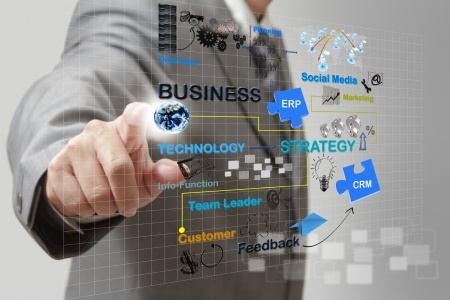
By Leonardo Carissimi, Senior Manager of Unisys Enterprise Services for Latin America
Since the middle of last year, a 2015 has been projected with many challenges for Brazil. Unfortunately, each week these projections prove to be more correct and the year takes on really challenging contours. One of the projections previously considered exaggerated, but which is now yet to be confirmed, is that of the energy crisis.
In fact, we can even understand that it has already begun. After all, the so-called energy crisis is not just about rationing and supply failures. It also concerns a strong increase in energy tariffs, which is already observed in much of the country.
From an information technology point of view, we must assess the impact of higher energy costs and energy supply failures on two main environments: the Datacenter environment and that of internal business users.
In the Datacenter, a certain maturity is observed in large companies. Many already adopt energy saving solutions such as using more efficient equipment, server virtualization, monitoring energy consumption, adopting hot and cold aisles, etc. It is also common to see appropriate contingencies for power failure scenarios such as uninterruptible power supply (UPS) systems, generators, different substations and remote sites.
Anyway, it's a good time to review the architecture of the Datacenter (especially if it's a few years old) and the solutions hosted on it. To review and test Disaster Recovery and Continuity Plans. And to consider the migration of some environments to the cloud computing model, which has great flexibility to adapt to demand cycles and, with that, lower consumption.
The environment of corporate users is less prepared to face more expensive energy and supply failures, for a number of reasons. Thus, he is more vulnerable to the effects of this crisis. A solution is needed that meets users, at least the most critical ones, and that guarantees that the business operation is not impacted. After all, to keep sales and customers happy, is there any point in having the Datacenter protected if key employees cannot access it?
I believe a "PC as a Service" solution addresses the issue. Such a solution can reduce energy consumption by up to 90% when replacing a desktop computer with a lightweight device such as a notebook, thin client or even a tablet (and also reduce air conditioning). And it allows users to access critical systems from anywhere, with any mobile device, even if the office is unavailable (no power, no water, etc).
Just remembering, the "PC as a Service" model is based on the virtualization of PCs, which in the market has been known for some time as VDI (Virtual Desktop Infrastructure). However, the factors that impeded the large-scale adoption of VDI in the recent past, such as heavy investment in server and storage infrastructure, and the complexity of implementing and administering them, are no longer an impediment. In the "as a service" model, the initial investment is made by the provider and the customer makes only the monthly payments, according to the number of PCs contracted, balancing their Return on Investment spreadsheets. And the administration of the infrastructure is in charge of the provider.
In addition to the benefits of reduced energy costs and greater resilience for business continuity, the PC as a Service model can also add several other benefits, such as:
• cost reduction with maintenance and on-site service of equipment;
• improved standardization and compliance of the environment;
• ease in controlling licenses, patch updates, software distribution and antivirus updates;
• increase in the speed of project implementation (especially seasonal and/or cyclical ones);
• increased security by centralizing user data in the Datacenter and thereby reducing loss and theft of locally stored information;
• reduction in the cost of downtime resulting from the delay in repairing a user's computer; among others.
In short, it presents itself as an adequate solution for the moment – for information technology and for business. After all, it not only mitigates the risks of the energy crisis, but also brings other benefits and opportunities. It's a great answer to doing more than just "keeping the lights on": differentiating yourself and gaining market share.













